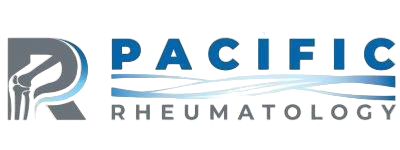
Tendonitis can cause pain in any joint in your body, but is especially common in the shoulders, elbows, knees, wrists, and heels. Board-certified rheumatologist Behnam Khaleghi, MD, offers regenerative medicine treatments for tendonitis at Pacific Rheumatology Medical Center in Orange and Laguna Hills, California. To learn how regenerative therapies can relieve the pain and inflammation of tendonitis, schedule an appointment online or by phone today.
request an appointmentTendons are strong cords of tissue that connect your muscles to your bones. Tendonitis occurs when a tendon becomes irritated and inflamed or suffers microscopic tears. This causes symptoms such as acute pain, swelling, and tenderness.
What are the common locations of tendonitis?
You can develop tendonitis in any of your tendons, but the most common sites of tendonitis include:
Shoulder
The rotator cuff in your shoulder is the most common location of tendonitis. Rotator cuff tendonitis generally occurs from overuse, such as from a sport or occupation that involve repetitive overhead arm motions.
Elbow
The elbow is a site of two common types of tendonitis: tennis elbow and golfer’s elbow. Tennis elbow causes pain on the outer side of the elbow joint, while golfer’s elbow affects the inner side.
Knee
The most common form of knee tendonitis is called jumper’s knee. This condition affects either the tendon at the lower or upper edge of your kneecap.
Heel
Achilles tendonitis involves inflammation of the Achilles tendon. This common sports injury causes pain between your lower leg and heel.
How is tendonitis diagnosed?
To diagnose tendonitis, Dr. Khaleghi carefully reviews your symptoms and medical history and performs a physical exam. He may take X-rays or blood tests to rule out other conditions that cause joint pain, such as arthritis or a bone fracture.
Then, he develops an individualized treatment plan to relieve your symptoms and restore normal function to your joint. Dr. Khaleghi offers the most advanced techniques in tendonitis treatment, including regenerative medicine.
How does regenerative medicine treat tendonitis?
Regenerative medicine is a type of therapy that’s based on your body’s natural ability to heal itself. Depending on your needs, Dr. Khaleghi may recommend one or both of the following regenerative medicine treatments:
Platelet-rich plasma (PRP)
Platelets are best known for their role in forming blood clots, but these components of your blood also contain growth factors that help your body heal from injuries. Platelet-rich plasma is a solution of highly concentrated platelets that comes from your own blood.
When Dr. Khaleghi injects PRP into an area of tendonitis, the high concentration of growth factors promotes faster healing of the damaged tendon.
To find out if regenerative medicine treatments like PRP or stem cell therapy for tendonitis is right for you, call Pacific Rheumatology Medical Center or book an appointment online today.
